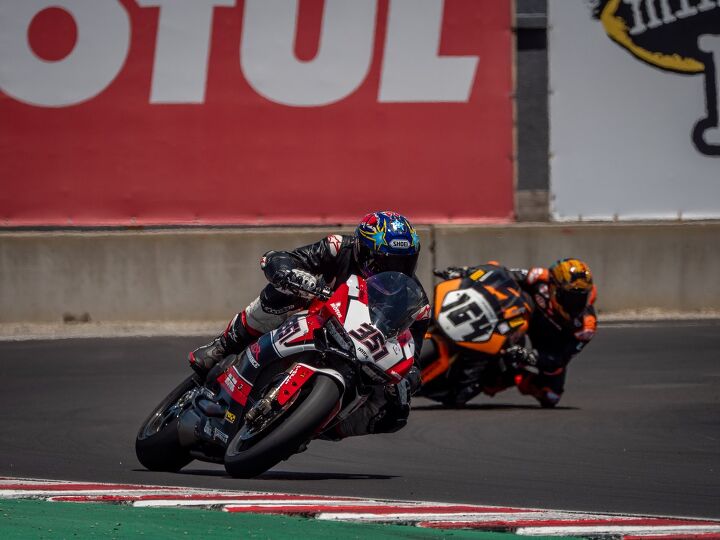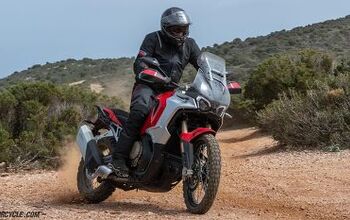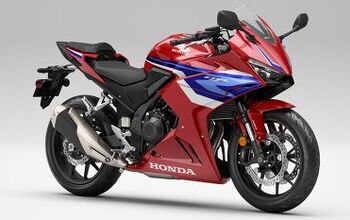Lightfighter: Out Of The Cul-De-Sac And Down The Corkscrew
Racing the all-electric Lightfighter at Laguna Seca.
Welcome to the second installment of the Lightfighter mini-series, brought to you by Brian Wismann, co-founder, co-designer, and co-builder of this all-electric racing motorcycle. If you missed part one, you can read it here. In part two, Brian recaps the team's hugely successful weekend racing at Laguna Seca with AHRMA. If you'd like to read more about the man or machine(s) – yes, there are now more than one in the wild – be sure to visit the Lightfighter Racing website. - TS
One of my favorite books about business is a short read about knowing the right time to quit. Allow me to explain the premise and the connection. The book examines challenges faced during big pursuits in life or work and the merits of objectively evaluating if you’re in a “dip” or a “cul-de-sac”. If you’re simply experiencing a dip, progress can be slow but will ultimately be overcome with hard work. If, instead, you’re in a cul-de-sac, you’ll find yourself running round-and-round in circles with no chance of meaningful progress despite the amount of effort applied. In the first situation, the advice is clearly “Keep going!” or “Push through!”, but in the latter, it’s “Get the heck out as quick as you can!”.
As we approached our annual AHRMA MotoFest race event at Laguna Seca, the debate over which more closely resembled our situation raged within me, although I did my best to hide my concern from the rest of the team as we were committed to giving the event our best effort. Our last several events at the iconic track had left us stuck on lap times or worse… And last time out with Rennie Scaysbrook filling in for Troy, I came home with the bike in bits after a flash of brilliance in practice (this was no fault of Rennie’s, and the crash was useful in showing us clearly that the set-up needed dialing in to better tame 240 ft-lbs of torque at the output to the rear wheel).
So… anticipation of a better result – after finding a breakthrough on bike setup at Buttonwillow back in April, was mixed with the knowledge that if it didn’t materialize, I’d have to face facts that there was a bigger, conceptual problem with my beloved Lightfighter program. I wasn’t committing to shuttering the program or anything dramatic, but I certainly would need to pause and re-evaluate if my assumptions on the best way to build a lightweight, competitive electric race bike still have merit.
Troy had no idea that his performance during the weekend’s races was the keystone in this four-year endeavor and potentially determined our future. Never one to shy away from a challenge though, Troy would be riding three bikes over the weekend – The Lightfighter, a Kramer GP2-890R, and a one-off Hypermono single built by Chris Consentino (for which I’m sure there’s a forthcoming article). The class structure within AHRMA would allow him to run the Hypermono amongst the single-cylinder bikes, the Kramer in with the twins, and the Lightfighter in the “catch-all” Formula Thunder and SOT1 classes with the large displacement Ducatis, KTMs, and pure-bred race machines.
A New Laguna?
The prior weekend’s MotoAmerica event had established that fears of the freshly re-paved surface were largely unfounded, and the Pros did a good job embedding a layer of Dunlop rubber into the race line to everyone’s benefit. Leading up to our event, we learned Pro rider Stefano Mesa, who topped the timesheets in Supersport Qualifying 1 and placed 4th overall in the race, would be in attendance to race an exotic Pierobon air-cooled Ducati for Boulder Motorsport. In a twist of fate, come Friday morning we also found his numbers being applied to one of the bikes in our garage as Troy’s teammate in the Kramer team on the GP2 890 purpose-built twin. Let me fast forward to the end and say that unsurprisingly, Stefano ran away with a victory in every race he entered on the twin-cylinder Kramer. Fortunately, the guy is friggin’ impossible not to like as he’s just such a friendly guy and so eager to share what he knows. Watching an athlete performing at the highest level is always impressive, even when that performance means beating you.
Despite losing a position to him in all of our races, there was a huge benefit that came from this unpredicted arrangement – Troy could chase Stefano on equal equipment around the track and truly see firsthand areas for improvement. Not only that, having a faster rider ahead of you on the track that happens to also be your teammate and thus “the first guy you want to beat” provided a bit of extra motivation in this case!
Another Lesson Learned
In the week leading up to the race weekend I rebuilt the Brembo calipers with new seals as I had a strong suspicion that one of the pistons was dragging and not fully retracting. Knowing that a dragging piston could be robbing us of critical straightline speed and overall efficiency, I decided to do something about it. In doing so, I also replaced all the brake fluid – which led me to a rookie level mistake that would end up costing us some race performance. When I installed fresh fluid, I used regular DOT4 rather than a high-temp racing rated fluid as it was all I could find in my haste to get the brakes rebuilt and the bike track ready [That’s called foreshadowing. -TS]. Given the short, 6-lap duration of our races, I really couldn’t fathom the brakes getting hot enough to cause a problem, but man, was I wrong.
Over the course of our race weekend, Troy was setting fast lap after fast lap, but complaining that the brakes were getting soft towards the end of the session or race. I bled them over and over, each time topping off with the same crappy auto parts store brake fluid. Suspecting the master cylinder, we even swapped over to a spare on loan from the Boulder Motorsports Ducati team. In the end, the fading brakes remained and probably cost us a few tenths per lap in the final race as Troy was having to pump them up for each corner! Ugh… kicking myself for this one still.
A New Hope
Throughout the practice sessions, I noticed we were making very few changes to our set-up compared to prior races. This boded well as confirmation of the new base set-up we had established at Buttonwillow back in April, but I didn’t want to get too optimistic too early. We tried decreasing the preload on the front fork by a turn, but put it right back the very next session. Troy was clearly comfortable and the bike was performing well, but would the breakthrough we needed materialize?
With no qualifying and only short morning practice sessions with the AHRMA series, we’d have to wait until our first race to really see what Troy could do. Our grid spots weren’t terrible this time out – with Troy slotting in to start in the second or third row. In what became the theme for the weekend, Troy used the Lightfighter’s electric torque to launch himself into first position and take the holeshot in all four races. He led that whole first lap, building a gap of roughly 2 seconds over 2nd as they came across start-finish on lap 1. To say it was our best first-lap performance would be an understatement.
Troy started the race weekend by setting our fastest lap ever on the Lightfighter at Laguna Seca from a standing start with a 1’33.9" and then continued to reel off faster laps over the course of the race and weekend. And while he eventually was passed by pro-rider Stefano Mesa and a couple of others on more powerful bikes, he was “in it” from start to finish from a field of roughly 30 racers. We oh-so-nearly hit the podium in Saturday’s Formula Thunder race as well, missing out by less than 3/10th of a second. Every race still felt like a victory, though, as we had clearly stepped up to the next level of performance and dropped our previous best lap time by roughly 2 seconds – both with consistency and without Troy taking big risks (aside from fading brakes).
So, did we do enough to validate our little program has merit enough to continue? Absolutely. It was a weekend with clear progress made and measured in lap times and race results. We were never far off the front and just needed a few things to come together to break through to the next level of performance. Throughout my career in product development, I’ve found that the more you study “overnight” successes, the more you realize that their true path is very rarely a straight line. It often has very large ups and downs, heroic efforts against the odds, and occasionally takes you down a corkscrew. Still, that’s sooooo much better than a cul-de-sac…
PS – What’s next, you ask? There’s some momentum brewing to take this show back to Barber in October and check our progress against our last run there at the end of 2019 with v1 of the bike. Stay tuned…
Become a Motorcycle.com insider. Get the latest motorcycle news first by subscribing to our newsletter here.
When he's not busy at his day job as the VP of Product Development at Zero Motorcycles, Brian spends his free time designing and building world-class electric racebikes in his home garage. The Co-founder of Lightfighter Racing, Brian and his partner Ely Schless are exercising their combined experience in electric propulsion to create electric racing motorcycles that can stand toe-to-toe with their internal combustion counterparts. Motorcycle.com is honored to have Brian share his experiences with us in his Lightfighter columns.
More by Brian Wismann

































Comments
Join the conversation
Well written fantastic read! Love the "dip" vs. "cul-de-sac" analogy.
Glad to hear of the excellent progress with the Lightfighter program. Congratulations all around.